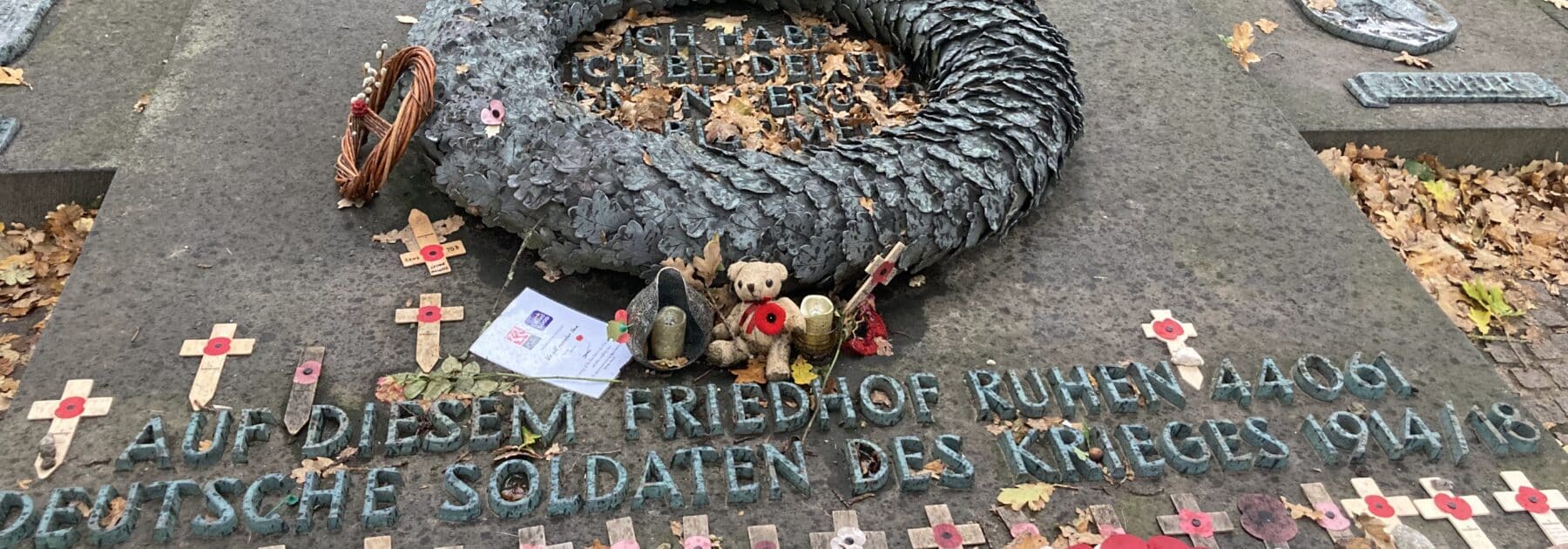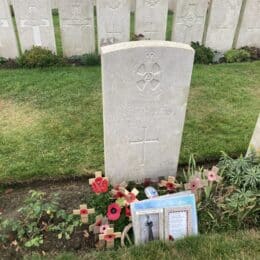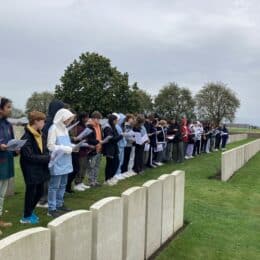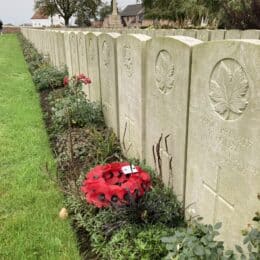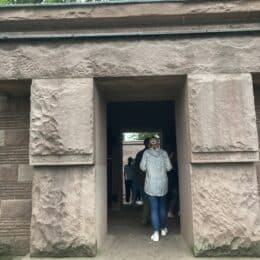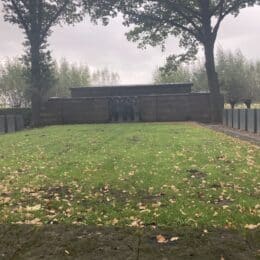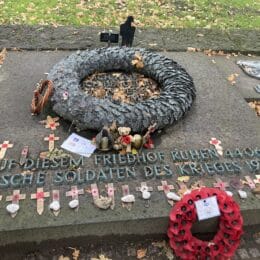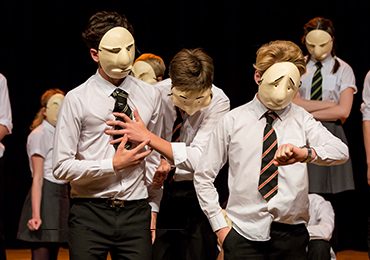Third Year Battlefields Trip
At the end of last week, Third Year historians embarked on a day trip to Belgium to visit some key historical sites from WW1 and WW2. Harry, Nathan and Charlotte (Third Year) gave this report.
Lijssenthoek Cemetery
Our first stop in Belgium was Lijssenthoek Cemetery, a site dedicated to British and Commonwealth forces who died in the First World War. The sight of 3,175 gravestones was quite an eye opener to the scale and tragedy of the war. Our Guide told us some of the personal stories behind some of the gravestones, such Nellie Spindler, the only nurse who was buried in the cemetery and J. E. Raphael, whose mother requested that her ashes be secretly buried with her son. It helped to highlight how the gravestones are more than just the tally of dead soldiers but a reminder of the people who gave their lives in the War. Thankfully, our Guide had other less moving information to tell us, such as how the Gravestones were designed and how to identify one from another.
We concluded our memorable visit to Lijssenthoek with a service held beside the grave of Private N. L. Allen, an Old Cat who died in the war. We laid a poppy wreath on his graves and took turns to read out the honour roll of Old Cats who lost their lives.
Menin Gate
Where else would we have lunch other than the historic Menin Gate, in Ypres? The Menin Gate, also known as the Menin Gate Memorial for the Missing is a memorial dedicated to the British and Commonwealth soldiers who were killed in Ypres Salient of World War I and whose graves are unknown or destroyed in WW2. The site of the Menin Gate was chosen because of the hundreds of thousands of soldiers who passed through it on their way to the battlefields. The Menin Gate is currently under restoration work was needed to guarantee its long-term preservation as it prepares for its centenary in 2027. Our guide told us about the Last Post, a ceremony which takes place every day at 8pm since 2 July 1928 – even during COVID-19 – buglers of the Last Post Association would sound the Last Post, only stopping when Belgium was under German control during WWII. On the side of the gate, the inscription ‘He is not missing; he is here.’, is written, symbolising how all the missing soldiers were inscribed on the walls of the Menin Gate and would not be forgotten.
Langemark
Finally, we drove to Langemark to visit the German military cemetery, one of 4 in Belgium. More than 44,000 soldiers are buried here and there is a mass grave near the entrance, containing nearly 25,000 servicemen. Sadly 8,000 of those in the mass grave
are unknown, their names lost over the course of the war. It was very meaningful to see the true consequences of the war. In lessons you learn about it but it is far more impactful to see the graves of those who sacrificed their lives in the war, fighting for their country. You don’t really appreciate just how many people WWI impacted until you see the many tributes to those who died, as we did in Langemark cemetery. Upon entering the cemetery, we passed under a large stone arch. There were doors on either side, one leading to a chamber inscribed with the names of all the fallen German soldiers who fought in WWI. Our guide explained the layout of the graveyard and it’s story as we stood by the mass grave. Then he showed us photos of Hitler visiting the cemetery, just as we did. Afterwards we had a few minutes to wander around the cemetery and reflect on the terrible consequences of the war and how many lives it truly impacted.


